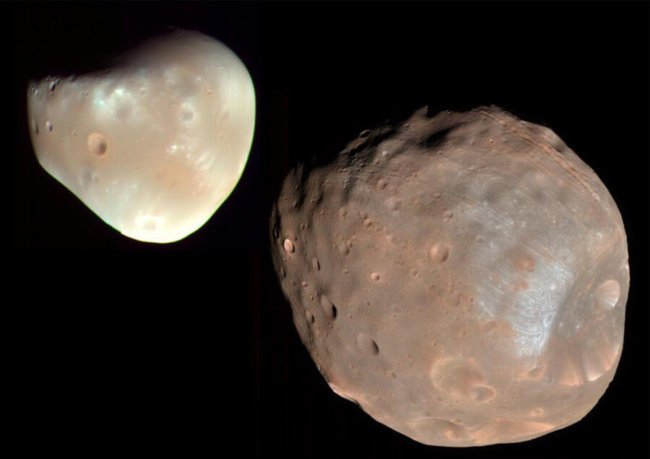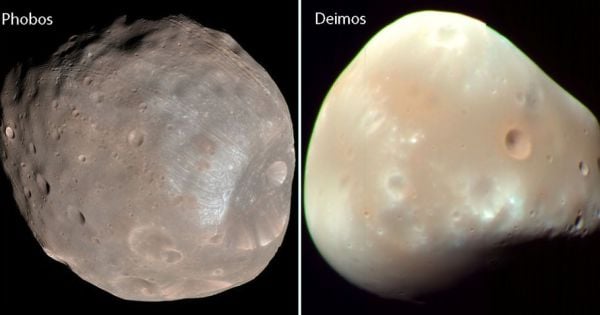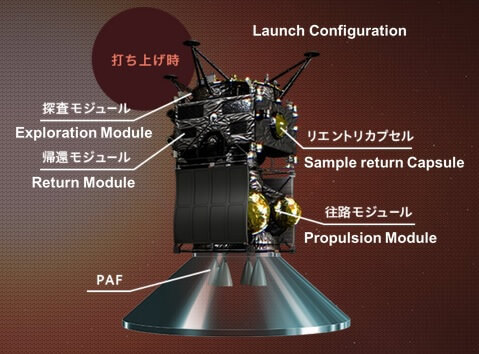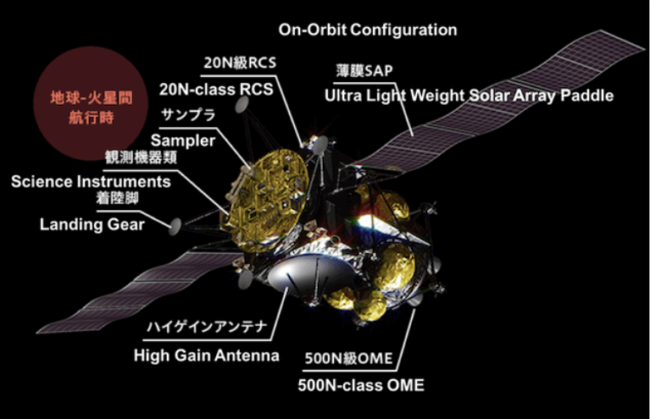
The Japanese aerospace exploration Agency (JAXA) plans to explore the moons of Mars in the 2020s. The goal is to collect samples from the surfaces of the moons, so the researchers could study the origin of these objects.
It is known that in coming decades the largest space agencies of the world intend to send a bunch of interesting missions to the moon and Mars. NASA, Roscosmos, ESA, the Chinese national space Agency, India — there is no shortage of proposals on creation of lunar bases, sending manned missions to Mars and robotic devices.
But the Japanese aerospace exploration Agency (JAXA) decided to chart a different path in the coming decades. Instead to explore the moon or Mars, Japan decided to take the satellites of Mars. The mission to study the Martian moons (MMX) aims to send a robotic spacecraft to Phobos and Deimos to explore the surface and return the samples to Earth for analysis.
The spacecraft will be deployed in the 2020-ies, and he will be tasked with two main objectives. The first is to help scientists determine the origin of Phobos and Deimos, on the subject of long debate. While some believe that these satellites are captured asteroids, while others say that they were created when the fragments ejected from Mars (because of the huge bumps on the surface), gathered together.

Dr. Masaki Fujimoto, Professor of space and Astronautical science JAXA, says the following:
“MMX will land on Phobos and collect samples not less than 10 grams from a distance of more than 2 cm below the surface. Analysis of samples returned to Earth, to clarify the nature of the asteroid that led to the formation of this moon. Observations of Deimos will be limited visualization in flight, but in combination with ground data to be received from Phobos, we will be able to pinpoint the origin of the two moons”.

The second task will be devoted to the characterization of conditions on the moons of Mars and around them. This will include surface processes on Phobos and Deimos, the nature of the environment in which they rotate, as well as global and temporal dynamics of the atmosphere of Mars — that is, dust, clouds, and water vapor.
“Airless bodies like asteroids exposed to the processes of space weathering,” says Dr. Fujimoto. “In the case of Phobos impact event on the surface produces a lot of dust particles. Unlike asteroid in interplanetary space, dust particles will not simply be lost and go to the orbit of Mars, he will again fall on the surface of Phobos. This is considered the reason for the presence of a thick Phobos regolith layer. The understanding of this process will be useful in the analysis of returned samples”.
Another important task of the mission — to learn more about the small bodies coming from the outer Solar system. Being the outermost solid planet, Mars marks the boundary between the terrestrial planets with solid surfaces and variable atmosphere, and the gas and ice giants of the outer Solar system that have atmospheres with a high density.

For this reason, the study of the moons of Mars, determine their origin and, in General, to extract information on the orbital environment of Mars can tell us much about the evolution of the Solar system. This mission not only provides the opportunity to understand how are the planets like Mars, but the process of moving these raw materials between the inner and outer parts of the Solar system in the early stages of its development:
“These small bodies were capsules deliver the water outside the frosty lines in the potentially habitable zone of the Solar system where our planet. The earth was born dry and needed a supply of water to life began. Most likely, one of the unsuccessful deliveries ended with the formation of Phobos, and the analysis of the samples will tell us more about this lost capsule”.
At the moment the probe is scheduled to launch in September 2024 — then Earth and Mars are closest to each other in orbit. By 2025, the probe will reach Mars and begin a three-year test period and then will return to Earth in July 2029. After that, he will rely on a set of scientific tools for research and sampling.
Among the tools are the neutron and gamma-ray spectrometer (NGRS), ligninfree spectrometer (NIRS), multi-band wide-angle camera (WAM), a telescopic camera (TL), interplanetary dust monitor (CMDM), mass spectrum analyzer (MSA) and LIDAR.
If all goes according to plan, JAXA will spend the next ten years, studying the information obtained during lunar and Martian missions. Exploration of the moon will tell about the history of the moon, and Mars — on the Geology and evolution of Mars (and possibly life on the red planet). The mission of the MMX tell the story of the Martian moons and the early Solar system as a whole.
Japanese space Agency will visit the moons of Mars in 2024
Ilya Hel